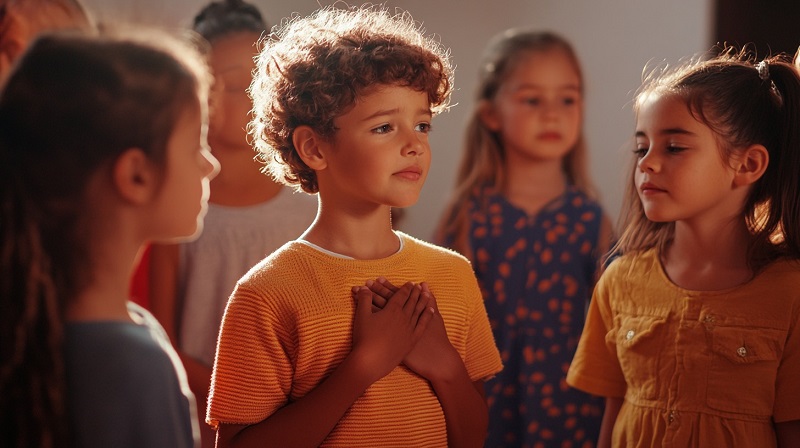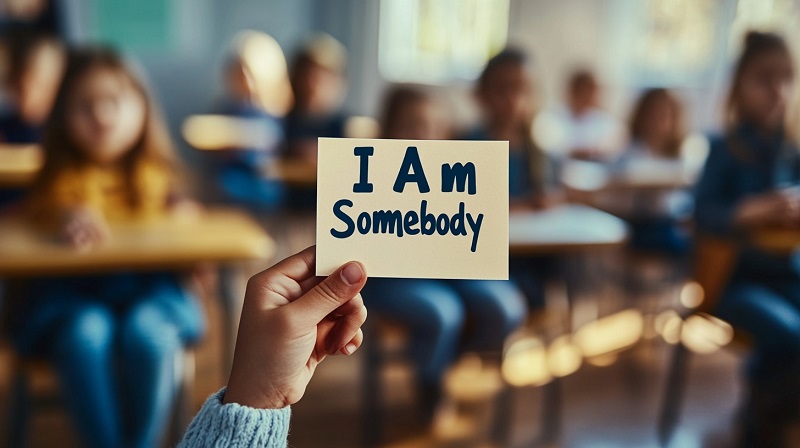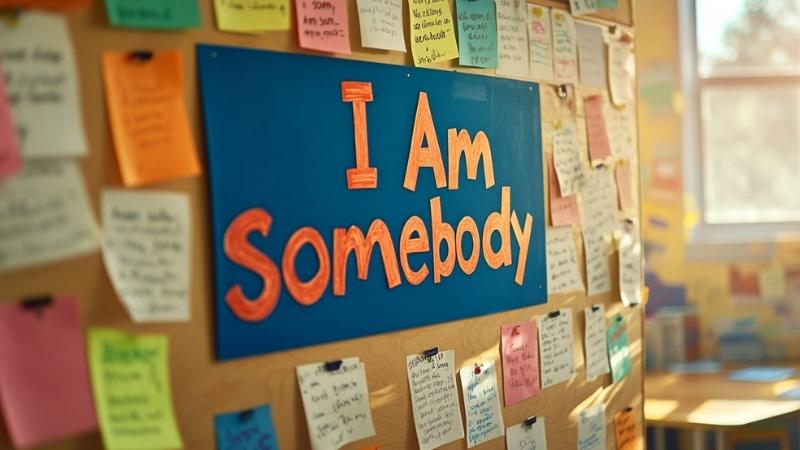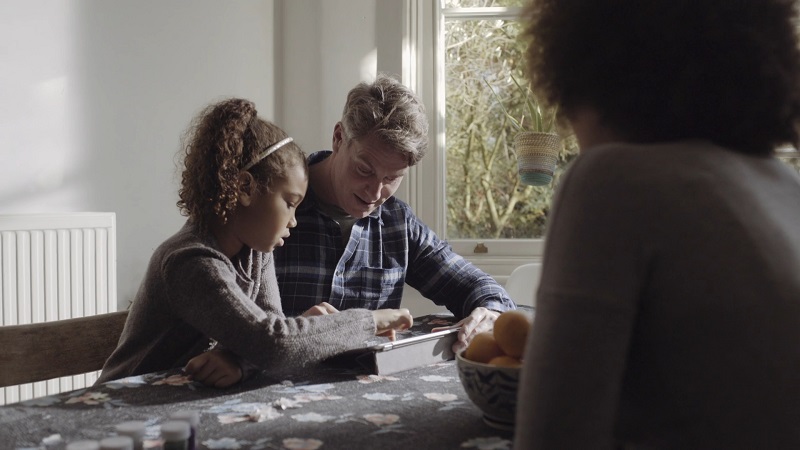Every child needs more than a desk, a pencil, and a lesson plan to thrive in school. Before numbers or letters can take root, a sense of identity must grow. Children walk into classrooms carrying invisible stories. Some feel unsure. Some feel unseen. Some already believe they cannot belong.
A morning affirmation like “I Am Somebody” reshapes that belief. Spoken aloud, those words tell a child that they matter. They do not need to wait to earn respect. They already deserve it. They do not need to meet someone else’s standards. They already have value. No reward, sticker, or perfect test score will define them. Their worth stands on its own.
Teachers, parents, and caregivers now turn to affirmations as part of a child’s daily structure. They help calm the noise. They lift confidence before the first bell. They clear away fear. The affirmation “I Am Somebody” gives children the power to begin their day with purpose, not doubt.
This article breaks down the origin, power, and use of “I Am Somebody” in modern learning environments. You will find practical ideas, examples from classrooms, and insights on how this simple phrase builds deep confidence.
The Heart Behind the Words

Children do not arrive in classrooms as blank slates. They carry feelings, doubts, memories, and questions. Before touching a pencil, many have already asked themselves silently: Do I belong here? Am I good enough?
Affirmations like “I Am Somebody” answer that question out loud. Spoken daily, they replace fear with strength. A child who hears those words every morning begins to see value in their own presence. The affirmation works not by rewarding achievement, but by recognizing existence.
Children repeat the phrase aloud. They feel the rhythm in their own voices. The repetition does not flatter. It anchors. No task must be completed before a child earns the right to say it. That message stands before the first question of the day. It stays in place through every wrong answer and carries into every hard moment after school.
Emotional Support Comes Before Instruction
Lessons fall flat when children feel invisible. A sense of personal worth creates a base layer for learning. Without it, information slides off the surface. With it, curiosity takes root. Confidence grows where the soil has been prepared by respect.
Where the Words Came From

The phrase “I Am Somebody” was born during one of the most urgent periods of social struggle in the United States. Reverend William Holmes Borders Sr., a respected pastor and educator in Atlanta, wrote the original version with a clear goal.
He wanted to give children a shield against the daily force of rejection. The phrase was not meant as encouragement. It was crafted as armor. Children repeated it in church halls and community meetings. They spoke each line with rising volume. Every repetition reinforced a sense of personal value that the outside world tried to erase.
Jesse Jackson later brought the phrase to national attention. During public speeches and youth gatherings, he stood before children in schools and community centers. He delivered the words with deliberate cadence. The children followed line by line:
I may be young, but I am somebody.
I may be on welfare, but I am somebody.
Each phrase paired a reality with a refusal to be reduced by it. That structure gave children a way to confront labels they heard at home, in school, or on the street. Instead of carrying those labels in silence, they learned to speak over them with certainty.
Why Morning Affirmations Build Confidence

Affirmations help build the inner structure children rely on when facing doubt, fear, or failure. When spoken at the start of the day, the right words place a firm foundation under everything that follows. Confidence does not appear by accident. It forms through repetition. Each time a child hears “I Am Somebody,” their brain forms a stronger link between self-perception and self-worth.
Young children do not separate internal value from external approval. A harsh look, ignored question, or wrong answer can make them question everything about themselves. Repeating a clear and consistent message every morning works as a reset. It clears away the pressure to perform and puts identity in the center.
In a school in Milwaukee, students begin each day by standing in a circle. One student leads the affirmation. Others follow. They say it with volume. They say it with eye contact. Some even place a hand over their chest. The goal is not performance. The goal is presence. Children remind themselves they have value. That reminder cuts through the noise.
In another classroom in Atlanta, teachers introduce a small pause after each line. Students close their eyes and take a breath. The moment becomes more than recitation. It becomes personal ownership of the words.
The effect goes beyond the classroom
Children who hear affirmations in school often repeat them at home. Some parents report their child saying “I Am Somebody” quietly before bedtime. Others hear it spoken aloud before a difficult task. The words begin to live outside the classroom walls.
How Teachers Use It in Classrooms

Teachers do not use affirmations as a quick fix or decoration. The best use comes when it becomes a steady routine. Children do not need a new message every day. They need the same message with enough strength to become truth.
In a third-grade classroom in New Jersey, the teacher begins each day with a call-and-response structure. She says the first part. Students echo the second. They do not rush through the lines. They keep a steady pace. By the time the affirmation ends, the room is quiet, focused, and grounded.
Some classrooms use visuals. A fourth-grade teacher in Austin created a display board with the words “I Am Somebody” in bold letters. Around it, students add personal sentences such as:
- “I help my sister with homework.”
- “I love reading about sharks.”
- “I am good at asking questions.”
The visual board grows each week. Students take ownership of the affirmation by connecting it to who they are.
How Families Can Bring It Home

Morning affirmations belong at home just as much as in classrooms. Parents shape the emotional climate of the morning. Before the door opens or the car starts, children carry messages about who they are and what they can expect from the day. The right message prepares them with strength.
In a home in Charlotte, one mother wrote the words “I Am Somebody” on a small whiteboard by the front door. Every morning before school, her child reads the line aloud. She then adds one sentence about herself.
One day she says, “I am somebody. I like how I helped my brother.” Another day, “I am somebody. I can try again in math today.” The routine takes less than one minute, but it sets the tone for everything that follows.
Other families create mirror messages. In a home in Seattle, a caregiver placed sticky notes on the bathroom mirror. One says “I am kind.” Another says “I am ready.” The third says “I am somebody.” The child reads them every morning after brushing teeth. That routine connects daily habits with personal identity.
Making the Words Speak to Every Child
Children carry different stories, strengths, and struggles. A single phrase will not fit every child the same way unless space exists for variation. Adapting the affirmation makes it more personal, more powerful, and more inclusive.
In a bilingual school in El Paso, the teacher created two versions.
“I am smart. I am kind. I am somebody.”
The second in Spanish:
“Soy inteligente. Soy amable. Soy alguien.”
Students take turns saying each line in both languages. That dual phrasing builds pride in culture and fluency. No one feels they have to choose between home language and school language.
In a school serving children with autism in Pittsburgh, one teacher used visual cards to guide the affirmation. Each line had a picture. A smile for “I am kind.” A book for “I am ready to learn.” A mirror for “I am somebody.”
Students pointed to each image as they said the words. The design matched the children’s communication style. It made the message accessible without diluting its impact.
One teacher in Minneapolis created versions that highlight identity. Her students come from a wide range of backgrounds. She added lines like:
- “I use a wheelchair, and I am somebody.”
- “I speak with an accent, and I am somebody.”
Last Words
Children face each day with many unknowns. Some will face pressure in classrooms. Others will face silence in hallways. Many will feel unsure before speaking up or trying something new. The voice they hear in those moments often determines how they respond.
A strong morning affirmation gives them that voice in advance. It does not need to be long or complex. The phrase “I Am Somebody” holds all the meaning required. It reminds them that their presence matters. Their thoughts matter. Their mistakes do not erase them. Their wins do not define them.
Parents, teachers, counselors, and caregivers who use those words give children a tool stronger than any lesson. They give them something to return to when the world feels unclear. They give them something to reach for when confidence fades.

